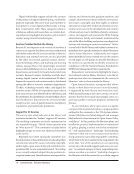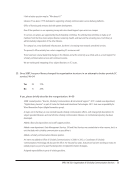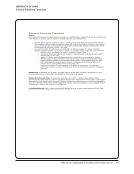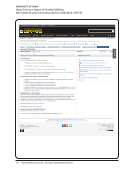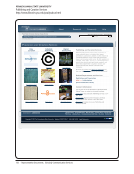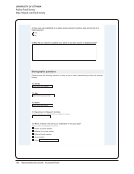SPEC Kit 332: Organization of Scholarly Communication Services · 19
Survey Questions and Responses
The SPEC Survey on Organization of Scholarly Communication Services was designed by Rachel Radom,
Instructional Services Librarian for Undergraduate Programs, Melanie Feltner-Reichert, Interim Head of
Scholarly Communication, and kynita stringer-stanback, 2010–2012 Diversity Resident Librarian, at the
University of Tennessee. These results are based on data submitted by 60 of the 126 ARL member libraries
(48%) by the deadline of June 12, 2012. The survey’s introductory text and questions are reproduced below,
followed by the response data and selected comments from the respondents.
Scholarly communication can be defined as the creation, transformation, dissemination, and preservation of knowledge related to
teaching, research, and scholarly endeavors. Among the many scholarly communications issues are author rights, the economics of
scholarly resources, new models of publishing (including open access, institutional repositories, rights and access to federally funded
research), and preservation of intellectual assets.
ARL has been a leader in advocating the development of innovative systems that offer barrier-free access to scholarly information
and member libraries have developed a variety of initiatives to educate researchers on scholarly communication issues. These
libraries have also developed services to support scholarly communication activities in their institutions that range from hosting and
publishing electronic journals to administering open access publishing funds to providing support for data mining, visualization, and
curation.
The last SPEC survey on scholarly communication was in 2007 and focused on libraries’ education initiatives. The purpose of this
survey is to explore how research institutions are currently organizing staff to support scholarly communication services, and whether
their organizational structures have changed since 2007. The survey first looks at who leads scholarly communication efforts inside
and outside the library. It next covers the scholarly communication related services that are offered to researchers, and which staff
support those services. The survey also asks how the library measures the success of its scholarly communication services, including
demonstrable outcomes of these services.
Survey Questions and Responses
The SPEC Survey on Organization of Scholarly Communication Services was designed by Rachel Radom,
Instructional Services Librarian for Undergraduate Programs, Melanie Feltner-Reichert, Interim Head of
Scholarly Communication, and kynita stringer-stanback, 2010–2012 Diversity Resident Librarian, at the
University of Tennessee. These results are based on data submitted by 60 of the 126 ARL member libraries
(48%) by the deadline of June 12, 2012. The survey’s introductory text and questions are reproduced below,
followed by the response data and selected comments from the respondents.
Scholarly communication can be defined as the creation, transformation, dissemination, and preservation of knowledge related to
teaching, research, and scholarly endeavors. Among the many scholarly communications issues are author rights, the economics of
scholarly resources, new models of publishing (including open access, institutional repositories, rights and access to federally funded
research), and preservation of intellectual assets.
ARL has been a leader in advocating the development of innovative systems that offer barrier-free access to scholarly information
and member libraries have developed a variety of initiatives to educate researchers on scholarly communication issues. These
libraries have also developed services to support scholarly communication activities in their institutions that range from hosting and
publishing electronic journals to administering open access publishing funds to providing support for data mining, visualization, and
curation.
The last SPEC survey on scholarly communication was in 2007 and focused on libraries’ education initiatives. The purpose of this
survey is to explore how research institutions are currently organizing staff to support scholarly communication services, and whether
their organizational structures have changed since 2007. The survey first looks at who leads scholarly communication efforts inside
and outside the library. It next covers the scholarly communication related services that are offered to researchers, and which staff
support those services. The survey also asks how the library measures the success of its scholarly communication services, including
demonstrable outcomes of these services.














